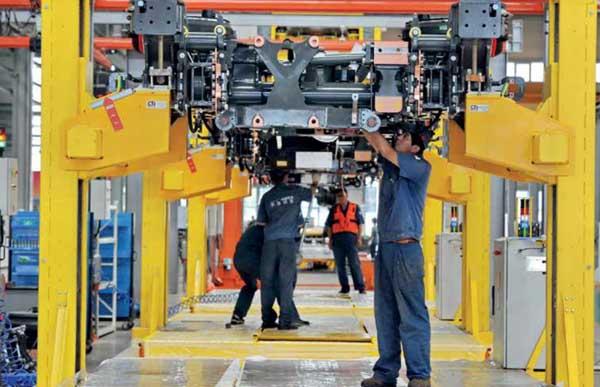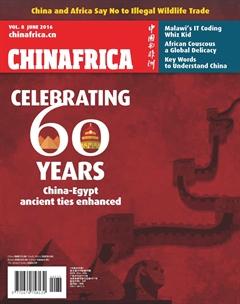Pivot of Development
By Yu Nan

Chinese manufacturing company shandong Kaitai Metal Abrasive has a double-pronged strategy to boost innovation. After concluding three merger and acquisition (M&A) deals with overseas companies in the past three years, it is seeking to acquire a research and development company this year to move up the value chain in terms of market positioning, brand value and innovative technology.
This is in line with the growing trend among Chinese companies to pursue overseas M&As and bring foreign brands and technology to the domestic market.
However, that is not enough.
“We cannot rely merely on overseas acquisitions for technological breakthroughs,” said Wang Ruiguo, General Manager of Shandong Kaitai. “Better research and strong domestic innovation is crucial.”
Wangs company is collaborating with 15 domestic education and research institutions for innovative products and technologies. It has also built laboratories for 15 well-known industry experts to accelerate the commercialization of their research results. Currently, it has 186 patents of its own.
The magic wand
Once “made in China” was regarded as being cheap and inferior-quality goods. The lack of innovation capacity and high value-added products was a challenge for Chinese manufacturing.
But a report early this year by the McKinsey Global Institute (MGI) says China will become a global leader in innovation if Chinese companies enhance their strengths in creative science and engineering.
It says innovation is essential to Chinas long-term sustainable growth. Over the past three decades the nation relied mainly on absorbing and adapting technology from other countries. But now innovation should play a larger role across all sectors of the Chinese economy.
Jonathan Woetzel, Director of MGI, said the Chinese Government has supported innovation with economic policies and investments. However, continued reforms, particularly in state-owned enterprises, are needed to speed up the innovation drive.
Some Chinese enterprises in the manufacturing sector have weathered the slowing down of the economy through innovative activities. The Himile Group is an example.
The Shandong-based company has become a world leader in the tire mold industry, witnessing an average 50 percent growth in annual output value. Its tire mold products hold 15 percent of the international market share.
Zhang Gongyun, President of the company, said they received nearly 70,000 innovative proposals from employees. Some of them have been implemented, generating more than 60 million yuan ($9.16 million) in economic benefits.
Himile now has more than 158 national patents and is planning to expand overseas. “We have full intellectual property rights to more than 60 percent of our production equipment,” Zhang added.
Zhang Bin, an associate researcher at the China Institute of International Studies, said China has the largest number of growing businesses which will become the main force of the nations economic growth in the future.
Quality over quantity
While innovation is the key to spur a companys vitality, it needs quality for sustainable development.
“We value quality over quantity. It is impossible to win orders from well-known companies without quality control,” said Cui Lixin, President of Shandong Innovation Metal Technology, an aluminum product manufacturer and supplier for many global electronics manufacturers.
In 2009, an aluminum alloy product by Shandong Innovation failed to meet the requirement of a leading electronics company. Thereafter, it brought together experts from home and abroad to come up with a better product. They managed to do that after four years and Shandong Innovation is now the main supplier of the electronics company.
Made in China
Last year, the State Council, Chinas cabinet, unveiled “Made in China 2025,” the national strategy to upgrade the manufacturing sector by encouraging innovation, optimizing industrial structures and boosting efficiency.
The 10-year strategy is the countrys first action plan focusing on manufacturing to promote new economic growth and generate opportunities for sectors such as new energy, aerospace and advanced equipment manufacturing.
Chinese manufacturers move to advance their technology is aligned with the “Made in China 2025” vision. Shandong Innovation has set up an institution for product research and development as well as technical cooperation with research organizations. The company is also planning to cooperate with universities to establish a technology think tank.
Wang Ruiguo plans to boost his companys scientific strength. “With the joint efforts of Chinas manufacturing enterprises, the goal to upgrade the worlds top manufacturer in terms of quantity to a manufacturing industry superpower in terms of quality is not far away,”he said.

